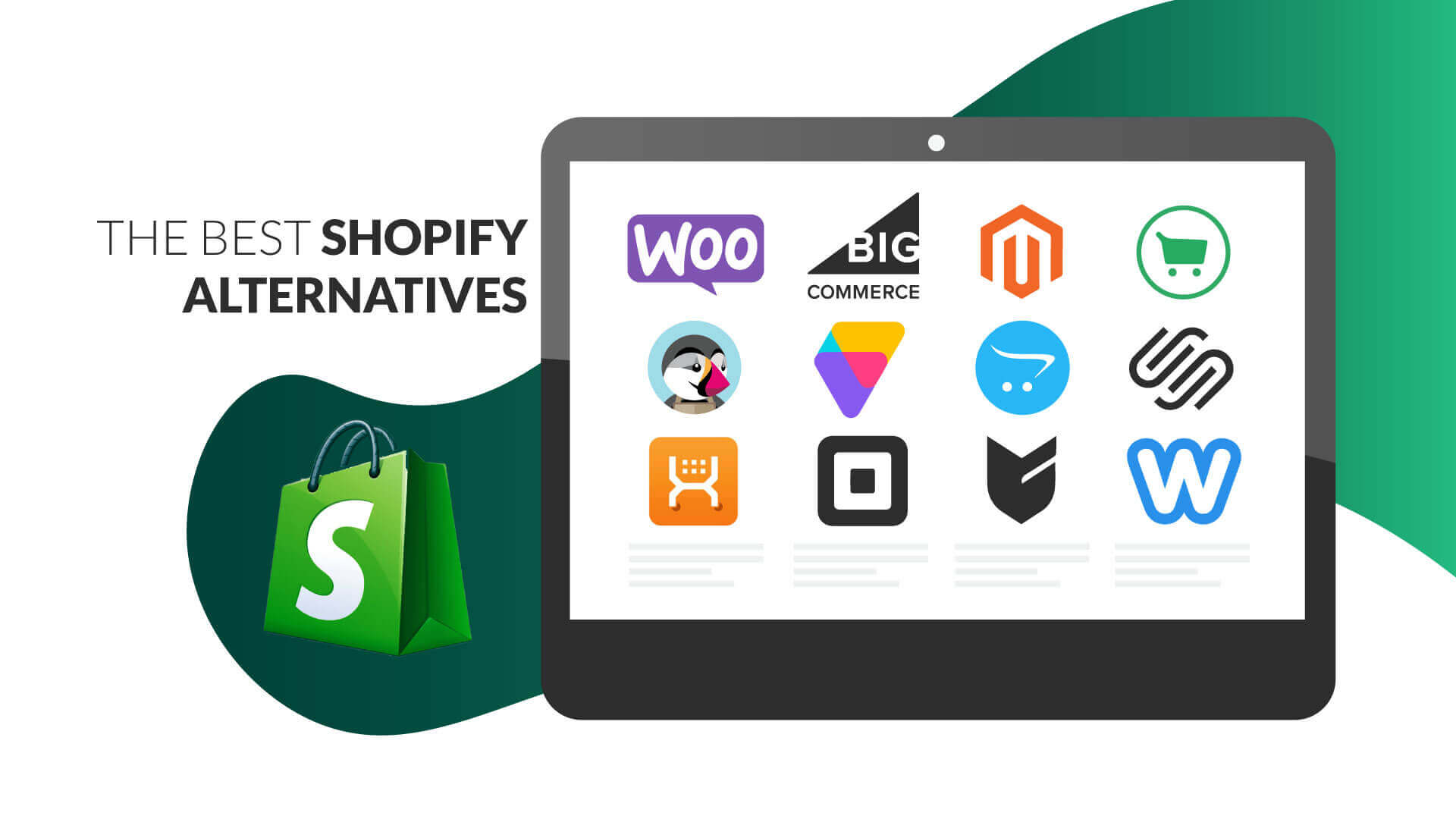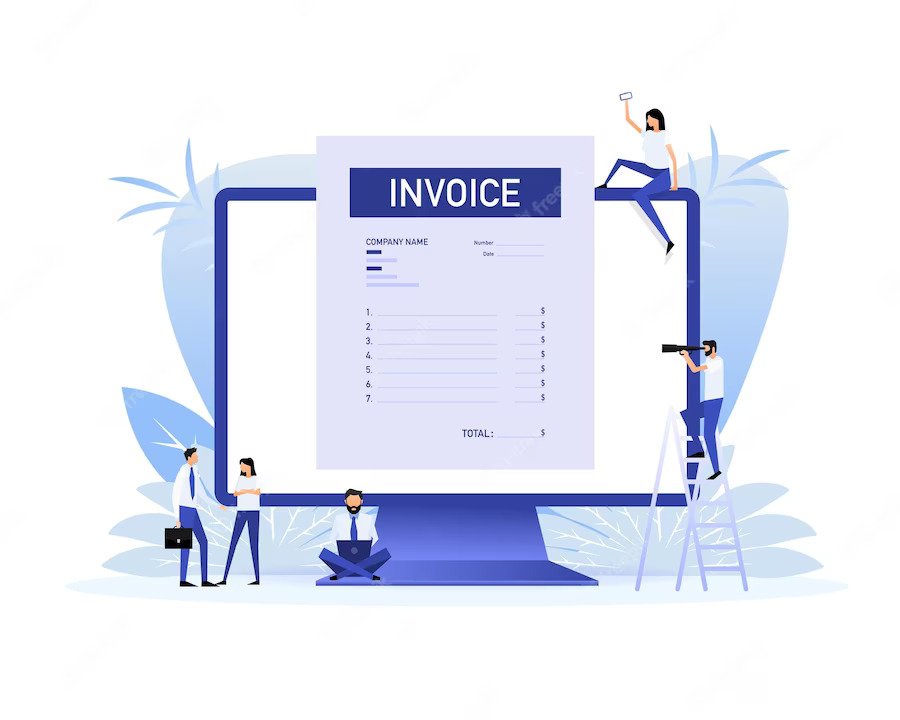Automated Invoicing Systems ROI Implementation Guide USA: Automated invoicing systems represent one of the highest-return investments businesses can make in financial process improvement, delivering measurable benefits through reduced administrative costs, accelerated cash flow, and improved accuracy that directly impacts profitability. Understanding the return on investment potential helps businesses justify implementation costs while setting realistic expectations for efficiency gains and operational improvements.
Stay organized as you grow. Use ProInvoice to manage billing and client relationships with ease.
The financial impact of invoice automation extends beyond simple time savings to encompass error reduction, faster payment collection, improved client relationships, and enhanced business intelligence that supports strategic decision-making. Companies implementing comprehensive automated invoicing solutions typically experience 40-60% reductions in invoice processing time while achieving 25-35% faster payment collection compared to manual processes.
Successful automation implementation requires systematic evaluation of current processes, careful system selection, and strategic rollout planning that minimizes disruption while maximizing adoption rates. Organizations utilizing professional invoice automation platforms often achieve faster implementation timelines and higher ROI realization due to comprehensive feature sets and proven deployment methodologies.
Quantifying ROI Potential for Invoice Automation
Direct Cost Savings Analysis
Invoice automation generates immediate, measurable cost savings through reduced manual labor, decreased error correction requirements, and elimination of paper-based processing expenses that compound over time.
Labor Cost Reduction: Manual invoice creation typically requires 15-30 minutes per invoice, including data entry, formatting, calculation verification, and distribution. Automated systems reduce this to 2-5 minutes, representing 70-85% time savings that translate directly to labor cost reductions or capacity increases.
Error Correction Savings: Manual invoicing errors require an average of 2-4 hours to identify, research, and correct, including client communication and relationship management. Automated systems with built-in validation reduce error rates by 85-95%, eliminating costly correction processes while improving client satisfaction.
Processing Supply Costs: Paper, printing, postage, and filing supplies for traditional invoicing typically cost $3-8 per invoice when fully allocated. Electronic invoicing eliminates these costs entirely while providing superior record-keeping and searchability capabilities.
Cash Flow Acceleration Benefits
Automated invoicing systems significantly accelerate cash flow through faster invoice delivery, integrated payment processing, and systematic follow-up procedures that reduce days sales outstanding (DSO).
Delivery Speed Improvements: Electronic invoice delivery occurs instantly compared to 3-7 days for postal delivery, effectively reducing payment cycles by one week. This acceleration improves working capital availability while reducing financing costs for growing businesses.
Payment Processing Integration: Systems with integrated payment processing enable immediate customer payment upon invoice receipt, reducing payment delays associated with manual check processing, bank deposits, and payment matching procedures.
Automated Collection Management: Systematic payment reminders and collection workflows maintain consistent follow-up without manual intervention, improving collection rates while preserving customer relationships through professional communication.
Scalability and Growth Impact
Automated invoicing systems provide scalable infrastructure that supports business growth without proportional increases in administrative overhead, enabling revenue expansion while maintaining cost efficiency.
Volume Handling Capacity: Manual processes become increasingly inefficient as invoice volumes grow, while automated systems handle volume increases with minimal additional costs. This scalability supports business expansion without administrative bottlenecks.
Multi-Location Support: Organizations with multiple locations benefit from centralized invoicing automation that maintains consistency while providing local customization capabilities and consolidated reporting for management oversight.
Integration Efficiency: Automated systems integrate with existing business software including CRM, project management, and accounting platforms, creating seamless workflows that eliminate data silos and duplicate entry requirements.
Implementation Cost Analysis and Budget Planning
Initial Investment Requirements
Understanding total implementation costs helps businesses develop realistic budgets while evaluating different automation solutions based on comprehensive cost-benefit analysis rather than subscription fees alone.
Software Licensing Costs: Monthly or annual subscription fees vary significantly based on feature sets, user counts, and transaction volumes. Enterprise solutions typically range from $50-500 monthly per user, while small business platforms start at $10-50 monthly for basic automation capabilities.
Implementation and Setup Costs: Professional implementation services including data migration, system configuration, and user training typically cost $2,000-20,000 depending on complexity and customization requirements.
Integration Development: Connecting automated invoicing systems with existing business software may require custom development or third-party integration tools costing $1,000-10,000 based on complexity and technical requirements.
Ongoing Operational Costs
Beyond initial implementation, automated invoicing systems involve ongoing costs that must be factored into ROI calculations and long-term budget planning processes.
Subscription and Maintenance Fees: Monthly subscription costs continue throughout system usage, often increasing with business growth and feature expansion. Understanding pricing models helps predict long-term costs accurately.
Payment Processing Fees: Integrated payment processing involves transaction fees typically ranging from 1.5-3.5% plus fixed fees per transaction. These costs must be balanced against collection efficiency gains and customer convenience benefits.
Training and Support Costs: Ongoing user training, system updates, and technical support may involve additional costs, particularly for complex implementations or rapidly growing organizations.
Break-Even Timeline Analysis
Most businesses achieve break-even on automated invoicing investments within 6-18 months, depending on invoice volumes, current process inefficiencies, and implementation complexity. Understanding break-even timelines helps set realistic expectations while providing benchmarks for measuring implementation success.
High-Volume Operations: Businesses processing 500+ invoices monthly typically achieve break-even within 3-6 months due to substantial labor savings and error reduction benefits that immediately impact operational costs.
Medium-Volume Businesses: Organizations processing 100-500 monthly invoices generally break even within 9-15 months, with benefits accelerating as teams become proficient with automated workflows and optimization opportunities.
Small Business Scenarios: Companies processing fewer than 100 monthly invoices may require 12-24 months to achieve break-even, but still benefit from professional presentation, error reduction, and cash flow improvements that justify investment costs.
Efficiency Gains and Performance Improvements
Process Speed and Accuracy Enhancement
Automated invoicing systems transform invoice processing from time-intensive manual tasks into streamlined workflows that maintain accuracy while dramatically reducing processing time requirements.
Invoice Generation Speed: Automated systems generate invoices in seconds compared to 15-30 minutes for manual creation, representing 95%+ time savings that free staff for higher-value activities like client relationship management and business development.
Data Accuracy Improvements: Automated data population from existing systems eliminates transcription errors while built-in calculation verification prevents mathematical mistakes that frequently occur in manual processes.
Consistency Standardization: Automated templates ensure consistent invoice formatting, terminology, and branding across all client interactions while maintaining compliance with company policies and professional standards.
Client Experience and Satisfaction Impact
Professional automated invoicing enhances client experiences through consistent communication, convenient payment options, and transparent billing processes that build trust and encourage prompt payment.
Professional Presentation: Automated systems produce consistently professional invoices with proper branding, clear formatting, and comprehensive information that reflects positively on business credibility.
Payment Convenience: Multiple payment options including credit cards, bank transfers, and digital wallets accommodate client preferences while reducing payment barriers that delay collection.
Communication Transparency: Automated systems provide clients with clear payment terms, due dates, and contact information while maintaining professional communication throughout the billing cycle.
Technology Integration and System Selection
Enterprise Resource Planning (ERP) Integration
Successful automated invoicing implementations integrate seamlessly with existing business systems to create unified workflows that eliminate data silos while providing comprehensive business intelligence.
Accounting System Connectivity: Direct integration with QuickBooks, Xero, SAP, and other accounting platforms ensures accurate financial records while eliminating duplicate data entry and reconciliation requirements.
Customer Relationship Management (CRM) Synchronization: CRM integration enables automated invoice generation based on sales activities while maintaining customer interaction histories that support relationship management efforts.
Project Management Platform Connection: Integration with project management tools enables automatic billing based on project milestones, time tracking, or deliverable completion, ensuring accurate and timely invoice generation.
Cloud-Based vs. On-Premise Solutions
Choosing between cloud-based and on-premise invoicing automation affects implementation costs, scalability, security, and ongoing maintenance requirements that impact long-term ROI realization.
Cloud-Based Advantages: Software-as-a-Service (SaaS) solutions offer lower upfront costs, automatic updates, scalable infrastructure, and remote access capabilities that support modern business operations and distributed teams.
On-Premise Considerations: Organizations with specific security requirements or extensive customization needs may prefer on-premise solutions despite higher implementation costs and ongoing maintenance responsibilities.
Hybrid Deployment Options: Some organizations benefit from hybrid approaches that maintain sensitive data on-premise while leveraging cloud capabilities for standard invoicing processes and client interactions.
Implementation Planning and Change Management
Phased Rollout Strategies
Successful automated invoicing implementations follow systematic rollout plans that minimize disruption while ensuring user adoption and process optimization throughout the transition period.
Pilot Program Development: Starting with small user groups or specific client segments allows organizations to refine processes, identify potential issues, and develop best practices before full-scale deployment.
Department-by-Department Implementation: Large organizations often benefit from departmental rollouts that allow focused training and support while maintaining business continuity during transition periods.
Client Communication Planning: Proactive client communication about new invoicing processes, payment options, and system changes helps maintain relationships while setting expectations for any procedural modifications.
Staff Training and Adoption Strategies
User adoption represents the most critical factor in automated invoicing success, requiring comprehensive training programs and change management approaches that ensure staff embrace new technologies.
Role-Specific Training Programs: Different user roles require tailored training focusing on their specific responsibilities within automated workflows, from basic invoice creation to advanced reporting and system administration.
Ongoing Support Systems: Establishing help desk resources, user documentation, and peer support networks helps maintain system utilization while addressing questions that arise during daily operations.
Performance Incentives: Linking automation adoption to performance metrics or incentive programs encourages staff engagement while demonstrating management commitment to successful implementation.
Quality Control and Process Optimization
Maintaining quality standards during automation transition requires systematic monitoring and continuous improvement processes that ensure accuracy while identifying optimization opportunities.
Validation Checkpoint Establishment: Implementing review processes during initial automation phases helps identify potential issues while building confidence in automated outputs and maintaining quality standards.
Error Monitoring Systems: Systematic error tracking and analysis help identify patterns requiring process adjustments while demonstrating improvement trends that justify continued automation investment.
Client Feedback Integration: Regular client feedback about invoicing processes helps identify satisfaction issues while providing insights for process improvements and feature enhancement priorities.
Advanced Automation Features and Capabilities
Artificial Intelligence and Machine Learning Integration
Modern automated invoicing systems incorporate AI and machine learning capabilities that provide predictive insights, intelligent automation, and enhanced decision-making support for financial management.
Payment Prediction Analytics: Machine learning algorithms analyze historical payment patterns to predict collection timelines, helping businesses optimize cash flow planning and credit decisions.
Anomaly Detection Systems: AI-powered systems identify unusual patterns in invoicing data that may indicate errors, fraud attempts, or process improvements opportunities requiring management attention.
Smart Categorization: Automated expense and revenue categorization based on historical data and machine learning improves accounting accuracy while reducing manual classification requirements.
Workflow Automation and Business Rules
Advanced automation platforms enable complex business rule implementation that handles diverse billing scenarios while maintaining consistency and accuracy across different client relationships.
Approval Workflow Integration: Automated approval routing based on invoice amounts, client types, or project parameters ensures proper authorization while maintaining process efficiency and control standards.
Dynamic Pricing Implementation: Automated systems can implement complex pricing structures including volume discounts, contract-specific rates, and promotional pricing while maintaining accuracy and client transparency.
Multi-Currency and Tax Automation: International businesses benefit from automated currency conversion, tax calculations, and compliance reporting that handle complex global billing requirements efficiently.
Performance Measurement and Continuous Improvement
Key Performance Indicator (KPI) Tracking
Measuring automated invoicing success requires comprehensive KPI tracking that demonstrates ROI achievement while identifying areas for continued improvement and optimization.
Days Sales Outstanding (DSO): Tracking average collection periods helps quantify cash flow improvements while identifying trends requiring attention or process adjustments.
Invoice Processing Time: Measuring time from invoice creation to delivery demonstrates efficiency gains while providing benchmarks for continued process optimization efforts.
Error Rate Reduction: Documenting error frequency changes shows accuracy improvements while identifying remaining issues requiring additional automation or process refinement.
Financial Impact Analysis
Regular financial analysis of automation benefits helps organizations understand ROI realization while making informed decisions about system upgrades or expansion opportunities.
Cost Per Invoice Analysis: Calculating total processing costs per invoice including labor, systems, and overhead provides clear metrics for ROI demonstration and budgeting purposes.
Cash Flow Improvement Measurement: Quantifying working capital improvements through faster collection and reduced administrative costs demonstrates financial impact beyond simple cost savings.
Revenue Growth Attribution: Understanding how improved invoicing efficiency supports business growth and client satisfaction helps justify continued automation investment and expansion.
System Optimization and Enhancement
Ongoing system optimization ensures continued ROI improvement while adapting to changing business needs and technological advancement opportunities.
Process Refinement: Regular workflow analysis identifies bottlenecks or inefficiencies requiring process adjustments or additional automation features to maintain optimal performance.
Feature Utilization Analysis: Understanding which automation features provide the greatest benefits helps prioritize training efforts and system configuration optimization for maximum impact.
Vendor Relationship Management: Maintaining strong relationships with automation vendors ensures access to new features, support resources, and optimization guidance that enhance long-term value realization.
Industry-Specific Implementation Considerations
Service-Based Businesses
Professional service firms face unique invoicing challenges including time tracking integration, project billing complexity, and client communication requirements that affect automation implementation strategies.
Time and Expense Integration: Service businesses benefit from automated systems that integrate time tracking, expense reporting, and project management to generate accurate invoices without manual compilation.
Retainer and Progress Billing: Automated systems handling recurring retainers and milestone-based billing provide consistent cash flow while maintaining client transparency about service delivery and value.
Professional Standards Compliance: Legal, accounting, and consulting firms require invoicing systems that maintain professional presentation standards while supporting industry-specific billing practices and client expectations.
Manufacturing and Distribution
Product-based businesses require automation features supporting complex pricing structures, inventory integration, and shipping coordination that affect invoice accuracy and timing.
Inventory System Integration: Automated invoicing systems that integrate with inventory management ensure accurate product availability, pricing, and shipping information while maintaining real-time financial records.
Volume and Contract Pricing: Manufacturing businesses benefit from automated systems that handle complex pricing agreements, volume discounts, and contract-specific terms without manual calculation requirements.
Supply Chain Coordination: Integration with shipping and logistics systems enables automated invoice generation upon delivery confirmation while providing clients with comprehensive transaction documentation.
Future-Proofing Automation Investments
Emerging Technology Integration
Automated invoicing continues evolving through emerging technologies that promise additional efficiency gains and enhanced business intelligence capabilities for forward-thinking organizations.
Blockchain Integration: Emerging blockchain technologies offer potential for automated payment processing, contract execution, and financial record verification that could further streamline invoicing processes.
Internet of Things (IoT) Connectivity: IoT integration enables automated billing based on usage data, service delivery confirmation, and performance metrics that provide transparent, accurate billing for complex service agreements.
Voice Technology Integration: Voice-activated systems enable hands-free invoice creation, approval, and monitoring capabilities that improve accessibility while reducing manual interaction requirements.
Scalability Planning
Successful automation investments anticipate future growth requirements and technological advancement opportunities that ensure continued value realization as businesses evolve.
Growth Capacity Planning: Selecting automation platforms with scalable architecture ensures systems can handle increased transaction volumes, user counts, and complexity requirements without performance degradation.
Integration Flexibility: Choosing systems with robust API capabilities and integration options provides flexibility for future business system additions or replacements without disrupting automated workflows.
Vendor Stability Assessment: Evaluating automation vendors for financial stability, development roadmaps, and market position helps ensure long-term platform viability and continued feature development.
Conclusion: Maximizing Automation Investment Returns
Automated invoicing systems deliver substantial ROI through quantifiable efficiency gains, cash flow improvements, and error reductions that directly impact business profitability and growth potential. Success requires systematic implementation planning, comprehensive training, and ongoing optimization efforts that maximize system capabilities while ensuring user adoption.
The key to ROI maximization lies in selecting appropriate automation platforms that align with business requirements, growth projections, and integration needs while providing scalable infrastructure for continued expansion. Professional invoice automation solutions offer comprehensive feature sets and proven implementation methodologies that accelerate ROI realization while minimizing deployment risks.
Focus on developing realistic ROI expectations based on current process inefficiencies, implementing systematic measurement approaches that demonstrate value achievement, and maintaining continuous improvement processes that optimize automation benefits over time. With proper planning and execution, automated invoicing becomes a cornerstone of efficient business operations while supporting sustainable growth and improved client relationships.
Organizations that approach automation strategically, with clear ROI objectives and systematic implementation plans, consistently achieve superior results while building competitive advantages through operational efficiency and enhanced client service capabilities. The investment in professional automation platforms pays dividends through improved cash flow, reduced administrative costs, and enhanced business intelligence that supports informed decision-making and continued growth.
Stay organized as you grow. Use ProInvoice to manage billing and client relationships with ease.














